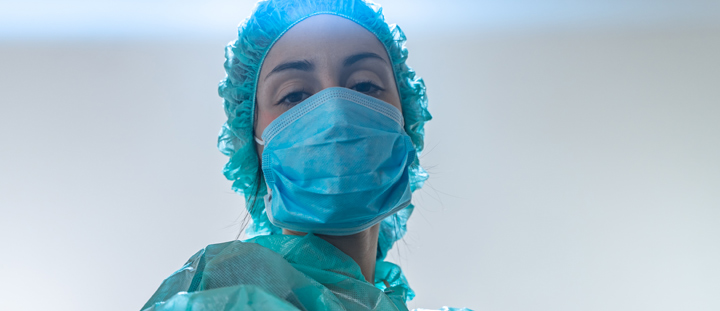The Disruption of Cancer Care During COVID-19
Cancer is a devastating illness that plagues many people all over the world. This makes oncology an extremely vital specialty. Yet sadly, cancer care and treatments have suffered widespread repercussions from the pandemic. For instance, some healthcare systems have had to adjust their treatment pathways, or even delay diagnoses and treatments of cancer in the COVID era. As the world deals with the new threat of COVID-19, many clinical trials have also been put on hold5.
Unfortunately, this means that discovery of new cancer treatments may be less likely to happen. On top of that, clinical trials can be a boon for those that get to participate in them, thus receiving cutting-edge treatment that wouldn't be available otherwise. But now, patients going through cancer aren't able to participate in these important trials like they may have been prior to the COVID-19 era.
 Dealing with the new threat of COVID-19
Dealing with the new threat of COVID-19The Dangers of COVID-19 Infection for Cancer Patients
What's most concerning about the issues surrounding the pandemic is that cancer patients tend to experience more severe outcomes if they do become ill with COVID-19. People fighting cancer are often immunocompromised because of the treatment regimens they have to undergo, making it harder for them to fight infections.
The American Journal of Clinical Oncology notes that cancer patients who hadundergone surgery or chemotherapy within 30 days before having a COVID infection were at a much higher risk of experiencing severe events from it1, such as greater need for ventilator support or even increased risk of mortality5. As an oncology provider, this is the last thing you'd ever want your patients to go through. And these events are obviously heartbreaking for patients and their families.
Chemotherapy in the Time of COVID-19
Given the vulnerability of patients going through cancer treatment, it’s no wonder that the number of patient visits and chemotherapy cycles decreased during the initial 2020 lockdowns. But this also meant that fewer cancer patients were receiving vital care during this time. And although the number of patients receiving treatment began to increase several months into the pandemic, so did the overall rates of COVID-193.
Clinics and hospitals are supposed to be sanitary safe zones. But even though healthcare providers work hard to keep their facilities as clean and safe as possible,every trip to the doctor holds the potential to expose patients to the dangerous COVID-19 pathogen. The risks and benefits of in-facility care have had to be weighed carefully.
Not only this, but it’s vital to use treatment pathways that support the safety of the medical professionals that care for cancer patients. Working with hazardous drugs such as those used in cancer treatment can pose serious health risks for healthcare workers, with or without COVID in the mix.